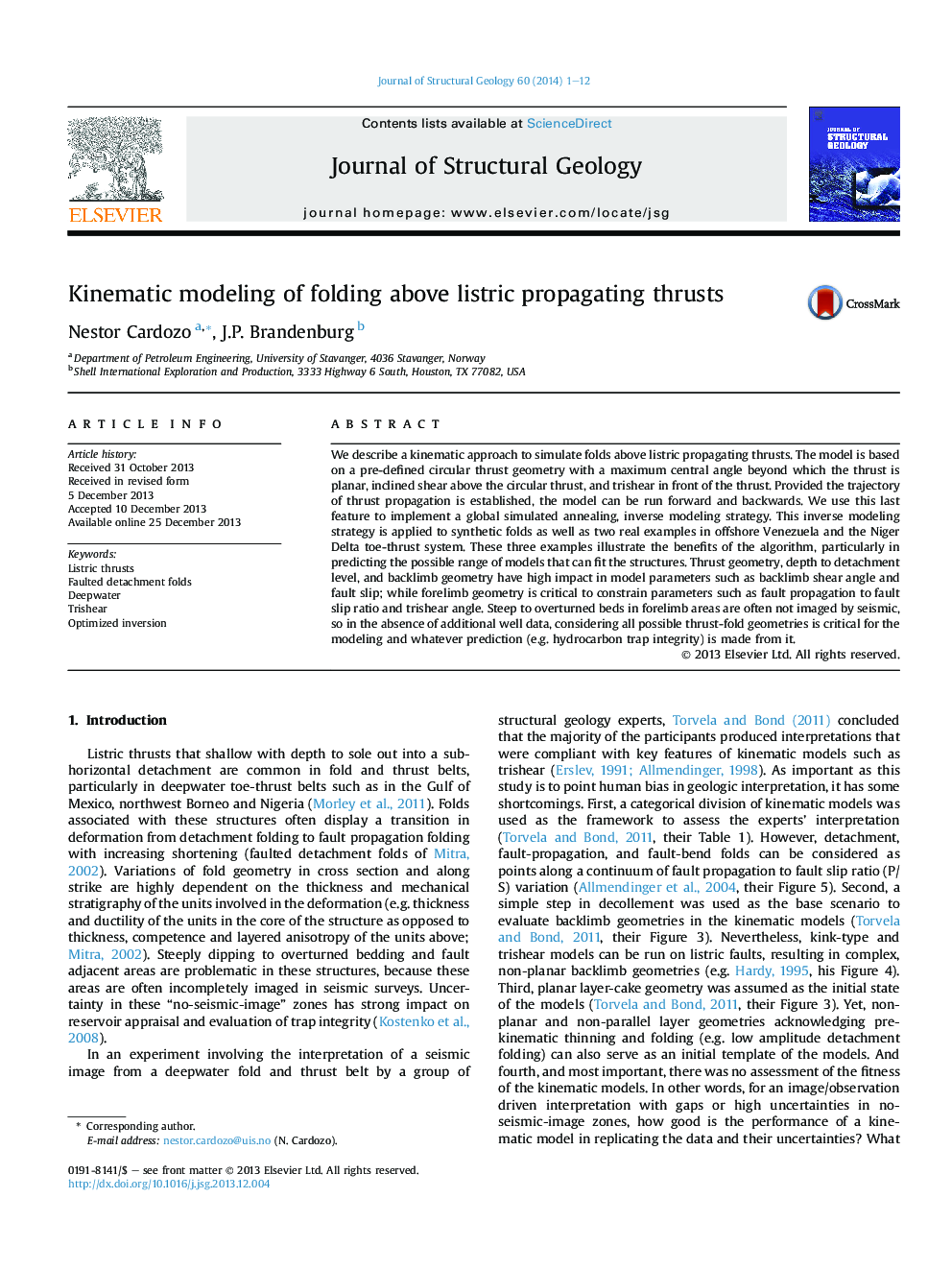| Article ID | Journal | Published Year | Pages | File Type |
|---|---|---|---|---|
| 6444926 | Journal of Structural Geology | 2014 | 12 Pages |
Abstract
We describe a kinematic approach to simulate folds above listric propagating thrusts. The model is based on a pre-defined circular thrust geometry with a maximum central angle beyond which the thrust is planar, inclined shear above the circular thrust, and trishear in front of the thrust. Provided the trajectory of thrust propagation is established, the model can be run forward and backwards. We use this last feature to implement a global simulated annealing, inverse modeling strategy. This inverse modeling strategy is applied to synthetic folds as well as two real examples in offshore Venezuela and the Niger Delta toe-thrust system. These three examples illustrate the benefits of the algorithm, particularly in predicting the possible range of models that can fit the structures. Thrust geometry, depth to detachment level, and backlimb geometry have high impact in model parameters such as backlimb shear angle and fault slip; while forelimb geometry is critical to constrain parameters such as fault propagation to fault slip ratio and trishear angle. Steep to overturned beds in forelimb areas are often not imaged by seismic, so in the absence of additional well data, considering all possible thrust-fold geometries is critical for the modeling and whatever prediction (e.g. hydrocarbon trap integrity) is made from it.
Related Topics
Physical Sciences and Engineering
Earth and Planetary Sciences
Geology
Authors
Nestor Cardozo, J.P. Brandenburg,
